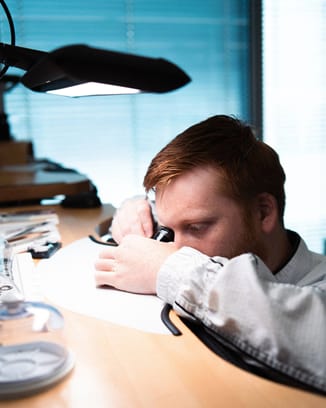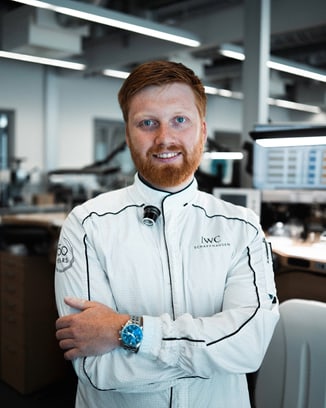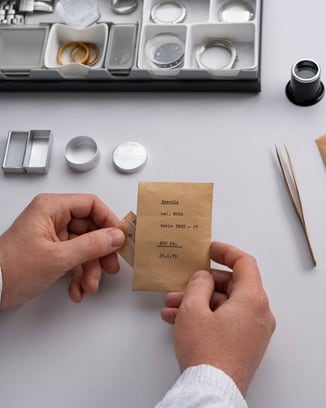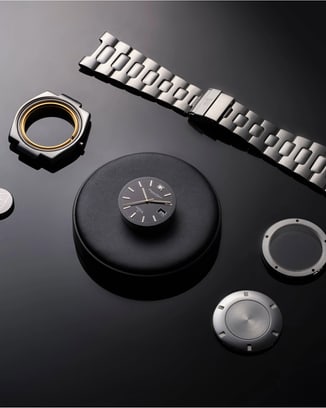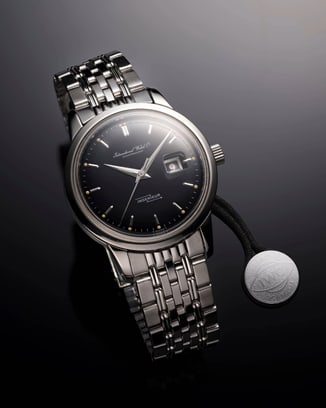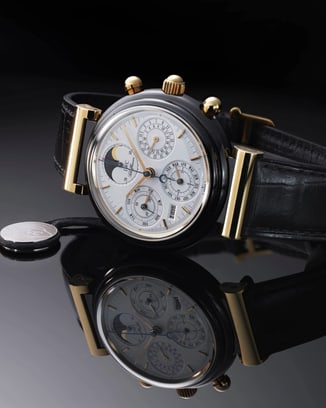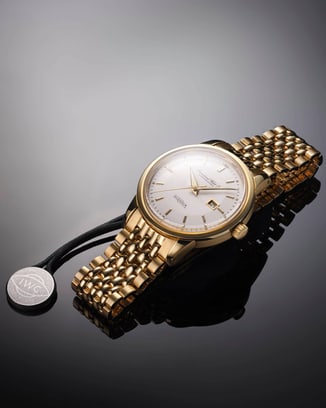World of watches
IWC. CURATED. WHERE HISTORY MEETS NOW
VINTAGE WATCHMAKER JULIAN PETIT EXPLAINS “IWC. CURATED.”
Interview by Elisabeth Gründer-Voll

Julian Petit works in IWC’s Customer Service “Vintage Team”. As part of IWC. Curated. he takes a closer look at true watchmaking artistry: models hand-picked by the IWC Museum team that represent an important era in the history of the manufacture – prized by collectors and watch enthusiasts alike.
Before any IWC. Curated. watch receives its official certification and International Limited Warranty, it undergoes a meticulous inspection and restoration process. Julian is one of the vintage watchmakers responsible for bringing cases, bracelets, and movements back to life – as true to the original as possible, using authentic historical components from company archives.
For Julian, it’s a labor of love: “I’ve always enjoyed working on older watches. They’re challenging – but that’s what makes them so rewarding. And of course, vintage IWCs are simply beautiful,” says the German-born watchmaker.
In an interview with the JOURNAL, he offers rare insights into his work and explains the concept behind IWC. Curated.
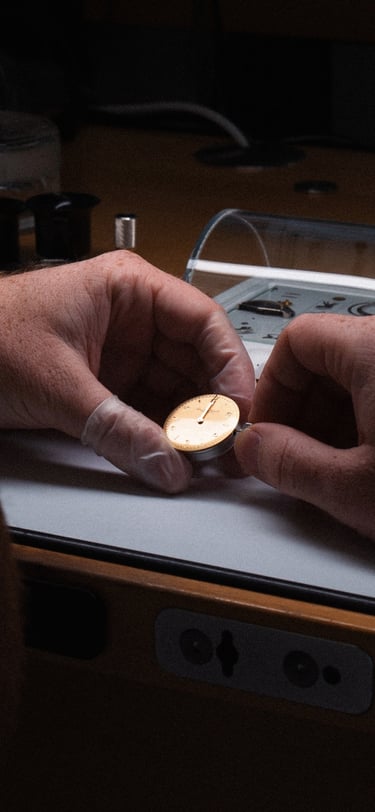
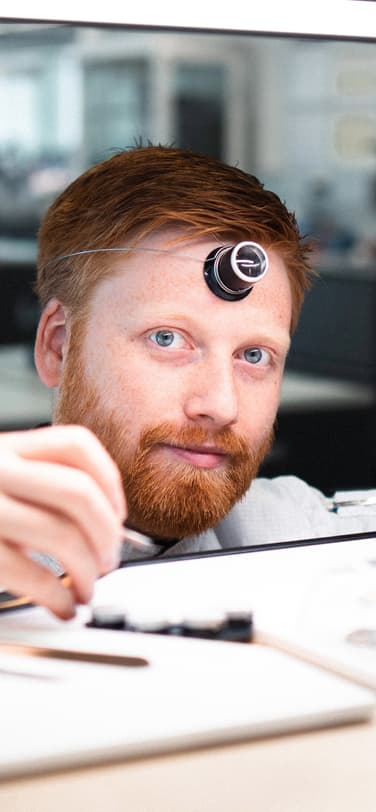
BACK TO THE ROOTS
What stages does an IWC. Curated. watch undergo at the IWC headquarters?
Firstly, the watch undergoes diagnostics to determine what work is necessary. Once the cost estimate is approved, the repair process begins. The case is disassembled and pre-cleaned in the case assembly department.
If needed, it is then refinished by our goldsmiths and polished by specialists. After that, all gaskets are replaced and the case is reassembled. Then the watch comes to us in the Vintage Team.
So what exactly does your work involve – step by step?
I start by servicing the movement, with a special focus on the balance wheel. The pivots are often worn down and need polishing. I also have to reshape the hairspring, which is frequently bent – either from impact or from previous repairs by external watchmakers.
I then assemble the movement and apply oil with the utmost precision. Getting the right amount of the right oil in the right place is crucial. Once the movement is ticking again, I fine-tune the escapement and regulate the movement. Finally, I case up the movement and make sure the watch leaves us in perfect working order.
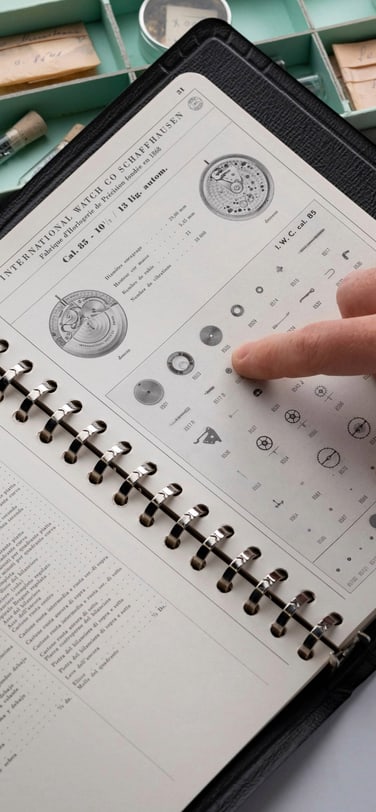
THE IWC ARCHIVE: A TREASURE TROVE OF SPARE PARTS
The timepieces on your desk are steeped in history. How much of their collective heritage have you discovered?
That’s true – they’ve no doubt been through a lot with their owners. Unfortunately, I rarely hear the full story. Sometimes there are engravings. I’ve seen watches that were gifts to a mother or father. That’s when you really feel the emotional weight behind each piece.
Where do the spare parts you use come from?
Many parts come straight from IWC’s old stock – original components from the time the watch was made. However, for particularly vintage watches for which replacement parts are no longer available, our restorers actually craft them by hand.
Tell me a little more about the IWC archive.
The archive contains very old spare parts – some dating back to the original production years. There are also complete watch movements and various dials and hands from different eras.
These are accompanied by a wealth of technical documentation, which is both helpful and interesting. Visitors also have the opportunity to admire the large sales books from that era. It's truly impressive.
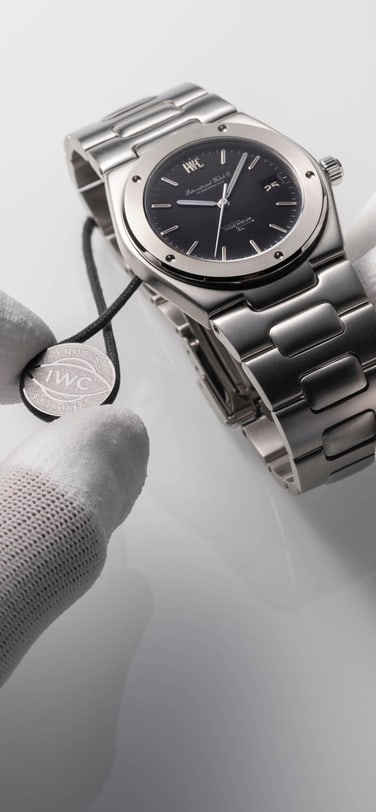
FINE-TUNED FOR THE NEXT CHAPTER
What speaks to you most about the IWC. Curated. program?
I think it’s wonderful that the watches are being restored to their former glory and can find new owners. Of course, I love all of IWC’s vintage watches.
Has there been a watch recently that you especially enjoyed working on?
Yes – I’m particularly fond of working on the Caliber 89. It’s incredibly robust and beautifully finished.
Is there a watch you’d love to work on one day?
I’d really like to work on the Caliber 60. It’s the predecessor to the Caliber 89, and it’s fascinating to see how the designs evolved and improved over time.
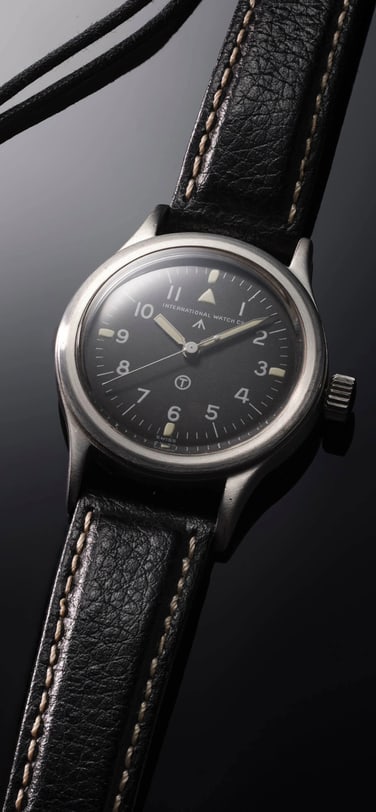
VINTAGE FAVORITES
Which IWC watches fascinate you the most?
There are so many watches I like. Among the new models, I find the pilot’s watches particularly interesting. Especially the Big Pilot 43 in steel. Among the older watches, I really like the Mark 11, and especially the more elegant gold models with the Caliber 89. All the older watches can also be viewed in person at the IWC Museum. I highly recommend a visit, as there are always new exhibitions. So it’s worth stopping by more than once.
EXCLUSIVE TO OUR BOUTIQUES
IWC. Curated. launches in selected boutiques in Switzerland (Schaffhausen), the UK (London Battersea Power Station), Dubai (Dubai Mall), and Japan (Tokyo Ginza). Highlights include an original Ingenieur SL (Ref. 1832) by Gérald Genta, the Da Vinci Perpetual Calendar Chronograph (Ref. 3750) with Kurt Klaus’s perpetual calendar, and a Navigator’s Wristwatch Mark 11 for the Royal Air Force.
The limited international warranty on all IWC. Curated. watches can be extended to eight years by registering for the “MyIWC Care Program.”
